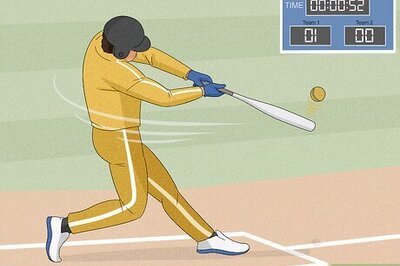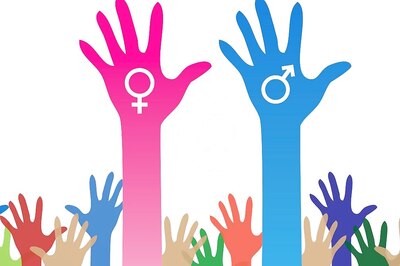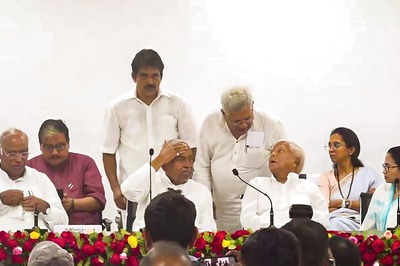
views
KOCHI: The menace of terrorism is a real threat. No country could effectively tackle this problem which has already been proved through the proliferation of sporadic attacks. We shall have to ponder over the ideas of Gandhi as a solution, or at least as an experiment.Gandhi wrote in 1947 that violence always thrived on counter-violence. Liberty has to be defended purely with non-violent means. He wrote in Harijan that if Nazis come to India the Congress will give them the same fight that it has given Great Britain ( Feb. 15, 1942). So confident was he in the non-violent method of war that a tacky brute force can be easily derailed however strong the military power is. It is not a whim of an impractical man or the big tale of a dreamer. A situation is expected to come when a warrior suffers a collapse when he finds that his warring capacity is unwanted (Harijan, July 28, 1940). The militarization of India after independence was destructive, says Gandhi. Even for border security, violence was undesirable. If India avoids the principle of ahimsa, the world will lose its last expectation.Gandhi was not speaking of the narrow squeak of armed interference, he was speaking about a solution of perennial nature. It was his experiment. “Non-violence is not a cover for cowardice, but it is the supreme virtue of the brave. Exercise of non-violence requires far greater bravery than that of swordsmanship.” (Young India 1926). Post-Gandhian era witnessed the concerted attempts of Vinoba, Jayaprakash Narayan and recently Anna Hazare to implement the Gandhian spirit in their activities. The refusal of Hazare to leave the prison created an impression that the Home Minister or the police was such a neb which proved that the arrest itself was intended to nag a person who led a non-violent movement against corruption. He became the icon of the impartial lot in the country, with the full support of the media. The Bhoodan Movement of Vinoba or the Nava Nirman Samithi of Jayaprakash was balanced with Hazare’s strike for a strong Lokpal Bill. It was really a blow which turned out to be a tight spot for the politicians. Apolitical intelligentsia kept carping about the scam of those who are in power. Like Gandhi, Vinoba criticised the greed for wealth. Centralisation of power is a contributory factor for acquiring wealth by foul means. Though they preach about decentralisation of authority and devolution of power, they hesitate to implement it despite the 73rd and 74th amendments of the Constitution. Vinoba wanted Lokniti to take the place of Rajniti. An independent village with self- reliance was a good dream. “Govt. is not an activity, it is a thought that makes the world go around.” (Democratic Values:Vinoba P.11). In Sarvodaya, every individual works for the welfare of society which is a freedom from the control of the Govt. All lands are owned by the village and aparigraha or non-acquisitiveness, make the people selfless. The non-violent method of Gandhi has many ramifications. He was aware of the cogent implication of this noble method. A self-reliant society becomes an attitude of mind and it is the capacity to do without what we do not have. Hunger for power and avarice have no place in the minds where non-violence exists.Subhas Chandra Bose plunked down to violence and joined with Japan, but Gandhi had no personal grudge against him for he valued the patriotism and boldness of Subhas. Similarly Sheikh Abdullah’s action in Kashmir turned out to be bloody, but Gandhi tolerated this though he expressed his disagreement of using weapons and force. It is interesting to remember the role of Gandhi in the Boer war. With other Indians, he organised Indian Ambulance Corps. They trained themselves at their own expenses to become nurses. When the White medical team did not help the wounded Zulu warriors, Gandhi with 24 Indian volunteers joined the British army as stretcher- bearers and sanitary aids. Thus he became part of the Zulu Rebellion. During World War II, Gandhi’s sympathies were with the Allies. He was against the totalitarian Herr Hitler. He suggested that the enemies of Nazism use non-violent resistance instead of war. Despite his uncompromising faith in non-violence, he mentioned the rare occasion where he would support violence.“Cowardice is impotence, worse than violence.” He wrote in the Harijan of Sept 15, 1946. A single-handed fighter against a horde of dacoits is praised by him. An uncompromising supporter of non-violence finds loopholes for violence on rare occasions. “Non-violence is the weapon of the really brave.” He wrote in 1947. “What is wanted is a deliberate giving up of violence out of strength.” (Young India Aug. 1929). He also believed that vengeance comes out of harm, imaginary or real. Gandhi was an experimenter of war without violence, says Gene Sharp. (P 15, Civilian Defence). When we create a society with infinite faith in non-violence, we are also training them to resist injustice. Refusal to abide by the wrong dictates of those in power is a part of non-violence for which sufficient training is required. A change in the attitude of the terrorists is anticipated in the present scenario as an ultimate salvo in lieu of attempting to suppress terrorists which has been proved impossible.(The writer is a retired principal, Payyanur)




















Comments
0 comment